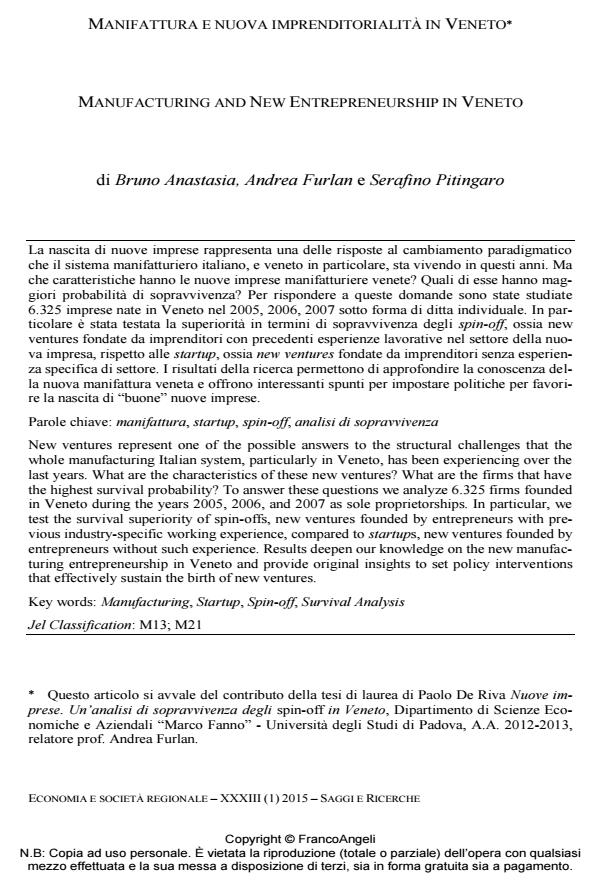Manifattura e nuova imprenditorialità in veneto
Titolo Rivista ECONOMIA E SOCIETÀ REGIONALE
Autori/Curatori Anastasia Bruno, Andrea Furlan, Serafino Pitingaro
Anno di pubblicazione 2015 Fascicolo 2015/1
Lingua Italiano Numero pagine 23 P. 102-124 Dimensione file 308 KB
DOI 10.3280/ES2015-001009
Il DOI è il codice a barre della proprietà intellettuale: per saperne di più
clicca qui
Qui sotto puoi vedere in anteprima la prima pagina di questo articolo.
Se questo articolo ti interessa, lo puoi acquistare (e scaricare in formato pdf) seguendo le facili indicazioni per acquistare il download credit. Acquista Download Credits per scaricare questo Articolo in formato PDF

FrancoAngeli è membro della Publishers International Linking Association, Inc (PILA)associazione indipendente e non profit per facilitare (attraverso i servizi tecnologici implementati da CrossRef.org) l’accesso degli studiosi ai contenuti digitali nelle pubblicazioni professionali e scientifiche
La nascita di nuove imprese rappresenta una delle risposte al cambiamento paradigmatico che il sistema manifatturiero italiano, e veneto in particolare, sta vivendo in questi anni. Ma che caratteristiche hanno le nuove imprese manifatturiere venete? Quali di esse hanno maggiori probabilità di sopravvivenza? Per rispondere a queste domande sono state studiate 6.325 imprese nate in Veneto nel 2005, 2006, 2007 sotto forma di ditta individuale. In particolare è stata testata la superiorità in termini di sopravvivenza degli spin-off, ossia new ventures fondate da imprenditori con precedenti esperienze lavorative nel settore della nuova impresa, rispetto alle startup, ossia new ventures fondate da imprenditori senza esperienza specifica di settore. I risultati della ricerca permettono di approfondire la conoscenza della nuova manifattura veneta e offrono interessanti spunti per impostare politiche per favorire la nascita di "buone" nuove imprese.
Parole chiave:Manifattura, startup, spin-off, analisi di sopravvivenza
Jel codes:M13; M21
Anastasia Bruno, Andrea Furlan, Serafino Pitingaro, Manifattura e nuova imprenditorialità in veneto in "ECONOMIA E SOCIETÀ REGIONALE " 1/2015, pp 102-124, DOI: 10.3280/ES2015-001009